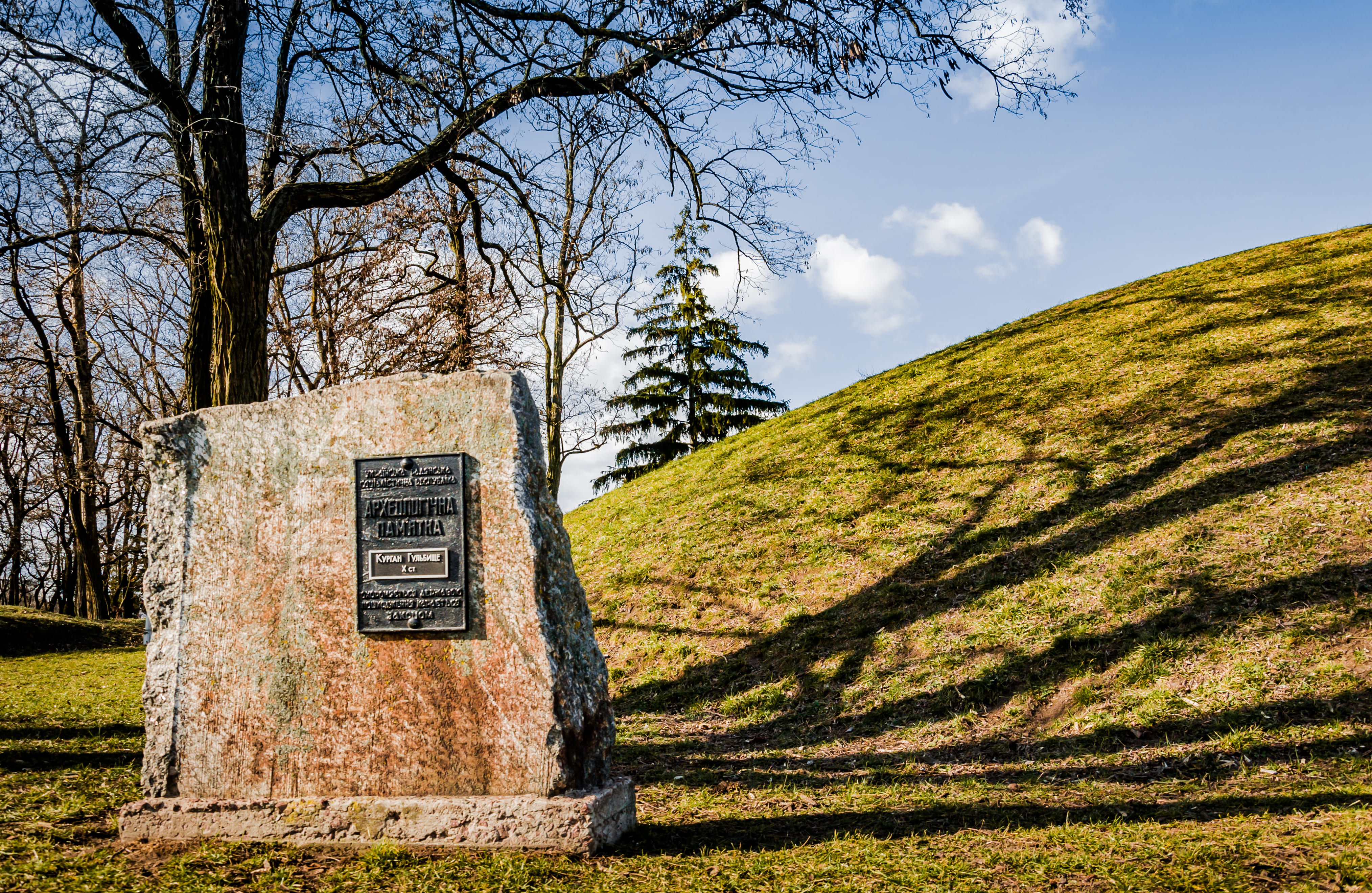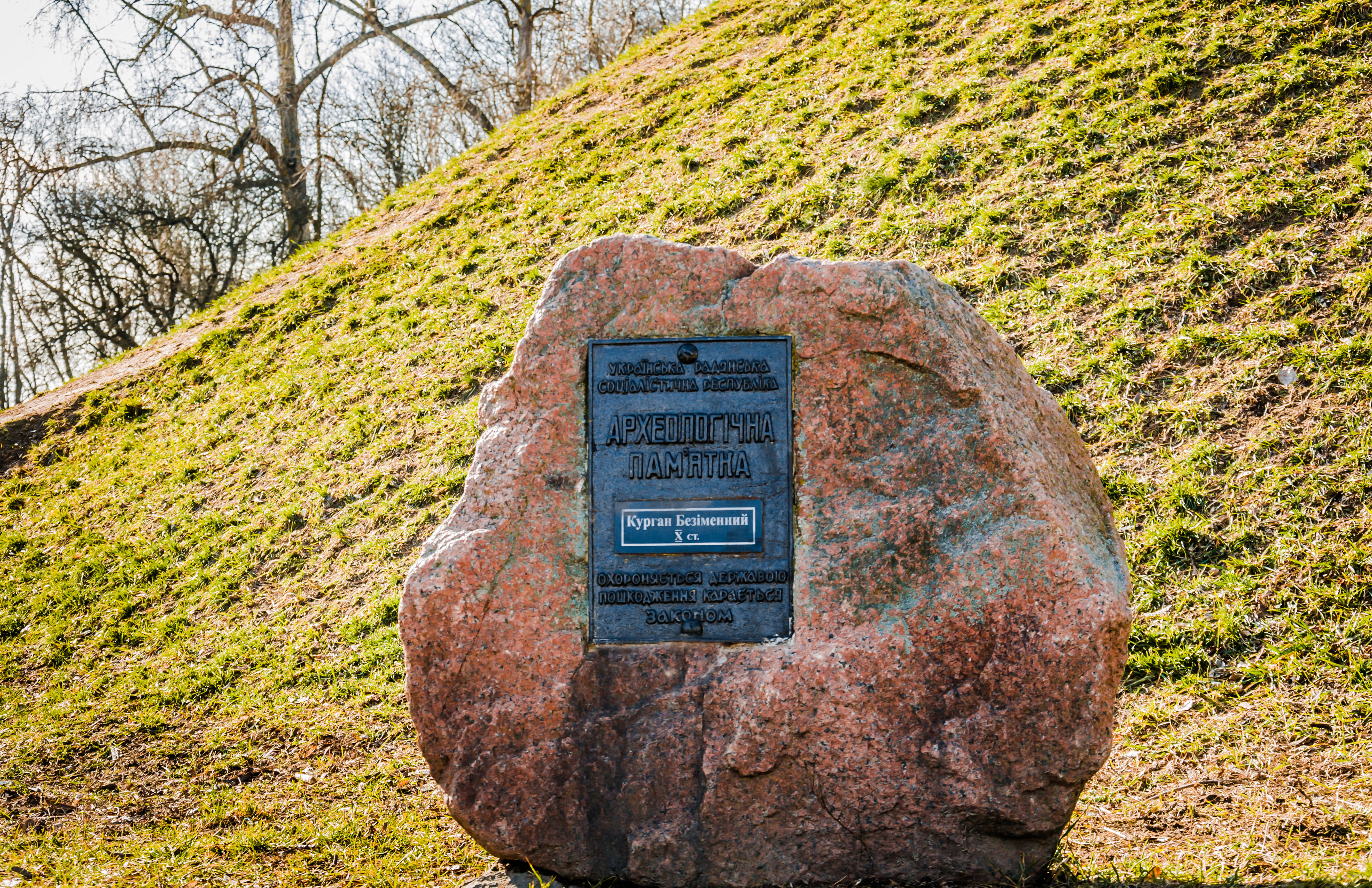Hulbyshche mound is surrounded with an embankment in 8.5 m high and 22 m in diameter which was excavated by an expedition. It was managed by the archaeologist Samokvasov in 1872. At that time only a third part of the mound was excavated. Investigators found out that at the foot of the mound there were three soil stairs. The first significant finding is a Chernihiv-type helmet found at a depth of 8 meters. It was something similar to a metal cap with a copper top and with a copper semi-circular sheet in the front. Other fragments of the iron mass were the remnants of chain armour stuck together under the influence of fire and subsequent oxidation processes.
During excavations the burials of a man, a woman and a horse were also discovered at the mound. One of the skeletons was probably owned by a retainer. Various objects were also found to accompany the pagan burial rite of cremation (sacrificial vessel with rams' bones, fur, etc. with traces of burning before being laid in the grave). Certain household items, such as: Samanid dirham of the XI century, a chisel and a sharpener, a comb, a knife, a hammer, nails, remnants of wooden buckets and bronze jug were discovered during the expeditions.
Among the jewels there were necklaces, glass ingots, gold and silver buttons, massive bronze pendants, a bronze ring and silver belt buckles. The most striking discovery was the great sword which occurred to be the largest of the old Kievan Rus swords that had ever been found. Its total length with the handle is 126 cm. The blade was of 6.5 cm in width and 105 cm in length, the massive handle was decorated with silver notches and three rows of stones. Usually the average size of the sword was 85-90 cm which means that the warrior had to be at least 215 cm in height in order to successfully manage the sword. That is why some researchers suggest that the epic hero Ilya Muromets is buried there.

In 1872, archaeologist Dmytro Samokvasov with an expedition excavated the second largest mound – Nameless (Bezimennyi), which is located near the mound Hulbishche at a distance of about 15 meters. The height of the mound is 5 meters (initially - 7 m), the diameter is 21 meters. In his own studies, D. Samokvasov noted that at that time the mound was girdled with a ditch up to 5 meters wide and up to 2 meters deep. This ditch had four jumpers for better approach to the mound. The finds in the mound were located at the bottom of the hill, where a large bonfire was discovered.
In the mound, archaeologists discovered axes, hook, knives, fishing rods, iron hoops from wooden buckets, and scraps of clothing. According to pagan beliefs, that such things were necessary in the afterlife. The finds from this mound were in worse quality than those foundlings from Hulbishche. Some of them were completely ruined.
According to the famous archaeologist Borys Rybakov, the mound Nameless (Bezimennyi) should be dated to the first half of the X century. The excavations are stored at the State Museum of History in Moscow.
